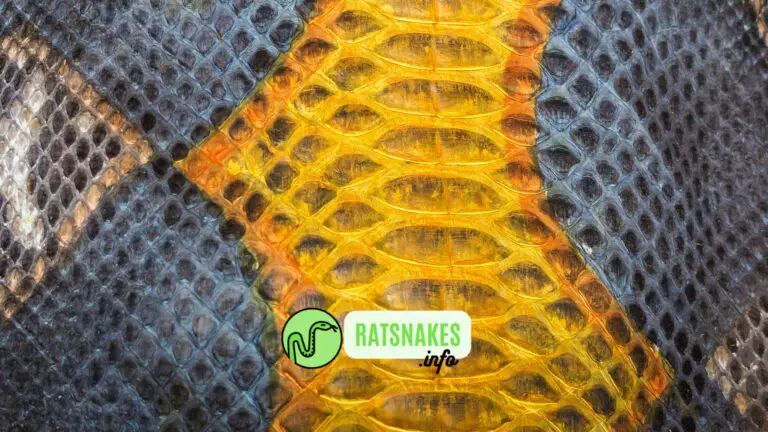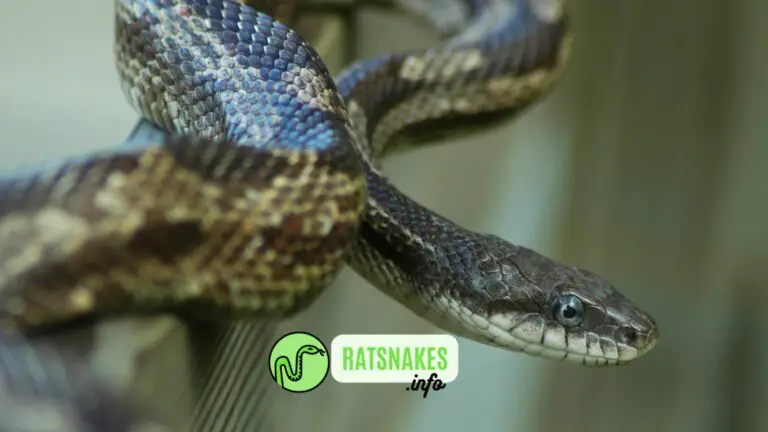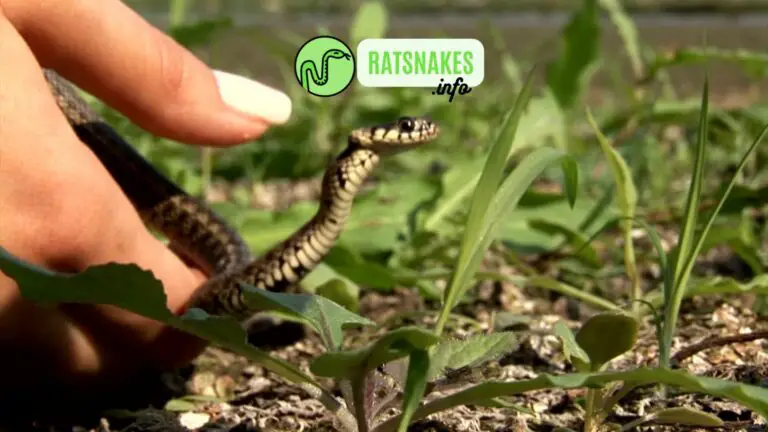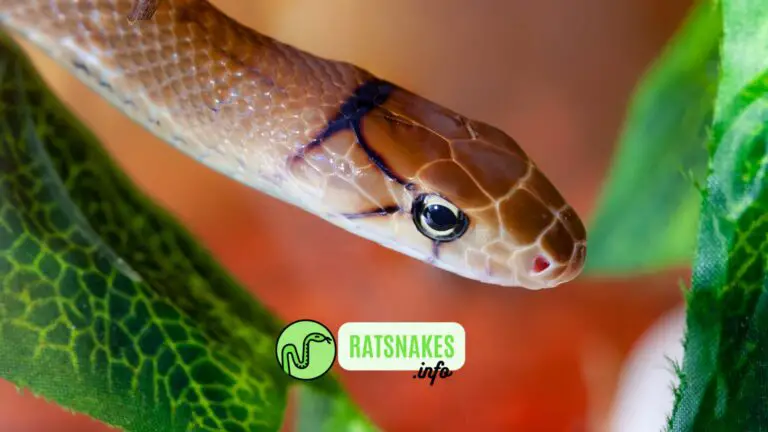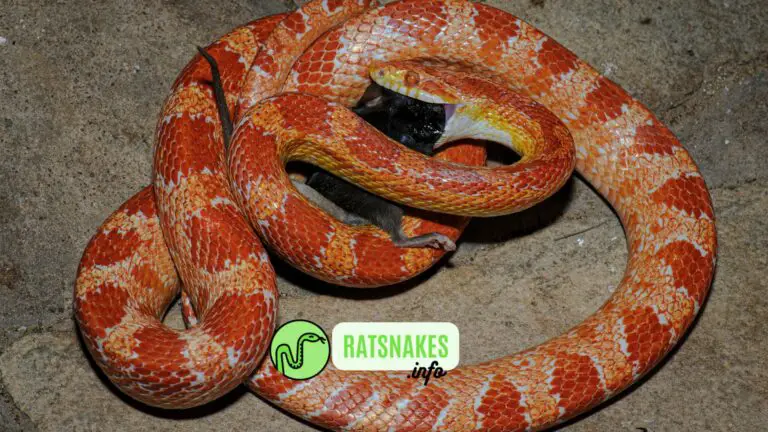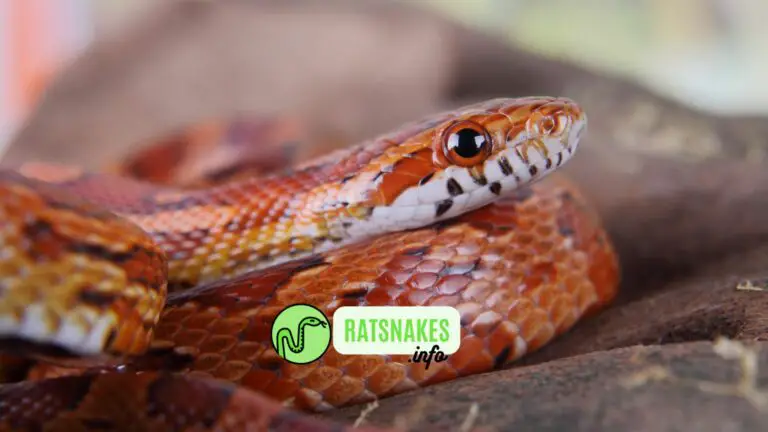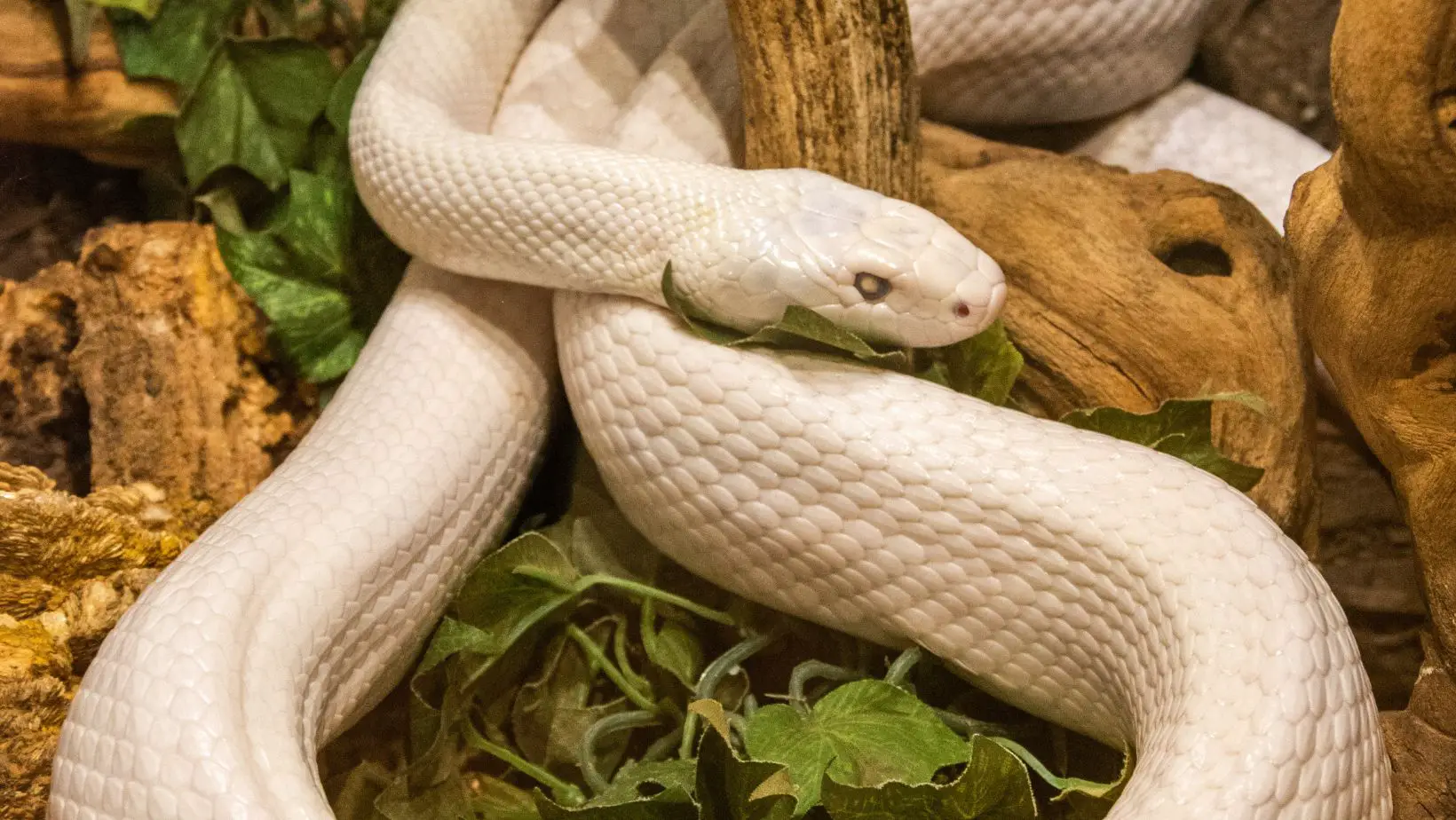
Leucistic Texas Rat Snakes are fascinating reptiles that captivate snake enthusiasts with their unique appearance and intriguing characteristics. In this article, we will explore the world of these mesmerizing creatures, delving into their genetics, habitat, behavior, and more. Join us on this exciting journey as we uncover the secrets of Leucistic Texas Rat Snakes.
Introduction
Leucistic Texas Rat Snakes, also known as albino snakes, are a captivating variation of the Texas Rat Snake species. These snakes exhibit a rare condition called leucism, which results in a partial or complete lack of pigmentation. Leucism is different from albinism, as it affects only the coloration of the skin and scales, while the eyes retain their normal color. The absence of pigment gives these snakes a striking appearance, with their scales showcasing a beautiful white or pale yellow coloration.
What is Leucism?
Leucism is a genetic condition characterized by the partial or total loss of pigmentation in an organism’s skin, hair, or scales. It occurs due to a lack of melanin production, the pigment responsible for coloration. Unlike albinism, which involves a complete absence of melanin and affects the eyes as well, leucism only affects the skin and scales, leaving the eyes with normal pigmentation. This unique condition is what distinguishes Leucistic Texas Rat Snakes from other snake species.
What is Albinism?
One of the primary characteristics of albinism is extreme sensitivity to sunlight and bright light due to the absence of melanin, which normally protects against harmful UV rays. This sensitivity can result in sunburns, eye discomfort, and an increased risk of developing skin cancer.
In addition to the physical features, individuals with albinism may also experience visual impairments. The lack of pigment in the eyes can cause abnormal development of the retina and other structures, leading to reduced visual acuity, nystagmus (involuntary eye movements), and sensitivity to glare.
Albinism can be inherited in various ways, depending on the specific genes involved. It is often passed down from parents who carry the gene mutations, although spontaneous gene mutations can also occur. The condition is relatively rare in the general population, occurring in approximately 1 in 20,000 people worldwide.
Albinism Versus Leucism Comparison Table
| Albinism | Leucism |
|---|---|
| Complete absence of melanin production | Partial or complete loss of pigmentation in skin, hair, or scales |
| Affects the entire body, including eyes | Affects only the skin or scales, while eyes retain normal pigmentation |
| Resulting in a complete lack of coloration | Results in white, pale, or diluted coloration |
| Sensitivity to light due to lack of pigmentation in the eyes | Normal eye pigmentation, with no sensitivity to light |
| Common in various species, including mammals, birds, and reptiles | Found in various species, including snakes, birds, and mammals |
| Increased susceptibility to sunburn and eye damage | No increased susceptibility to sunburn or eye damage |
| Genetic condition inherited through recessive genes | Genetic condition inherited through various genetic mechanisms |
| Rare in the wild | Relatively rare in the wild, but more common in captive-bred populations |
| Can impact overall health and survival in the wild | Does not typically impact overall health or survival in the wild |
Please note that this is a general comparison between albinism and leucism. The specific characteristics and effects may vary depending on the species and individual organisms.
Leucistic Texas Rat Snakes: An Overview
Leucistic Texas Rat Snakes belong to the Elaphe obsoleta family and are native to the southern regions of the United States, particularly Texas. These snakes are highly adaptable and can thrive in a variety of habitats, including forests, grasslands, and even urban areas. They are non-venomous and are known for their docile nature, making them popular among snake enthusiasts and reptile keepers.
Characteristics of Leucistic Texas Rat Snakes
Leucistic Texas Rat Snakes possess several distinctive characteristics that set them apart from other snake species. Their scales are predominantly white or pale yellow, giving them an ethereal and mesmerizing appearance. The eyes of Leucistic Texas Rat Snakes usually display a normal coloration, ranging from black to red, depending on the individual. These snakes can grow to an impressive length of 4 to 6 feet, with males typically being slightly larger than females.
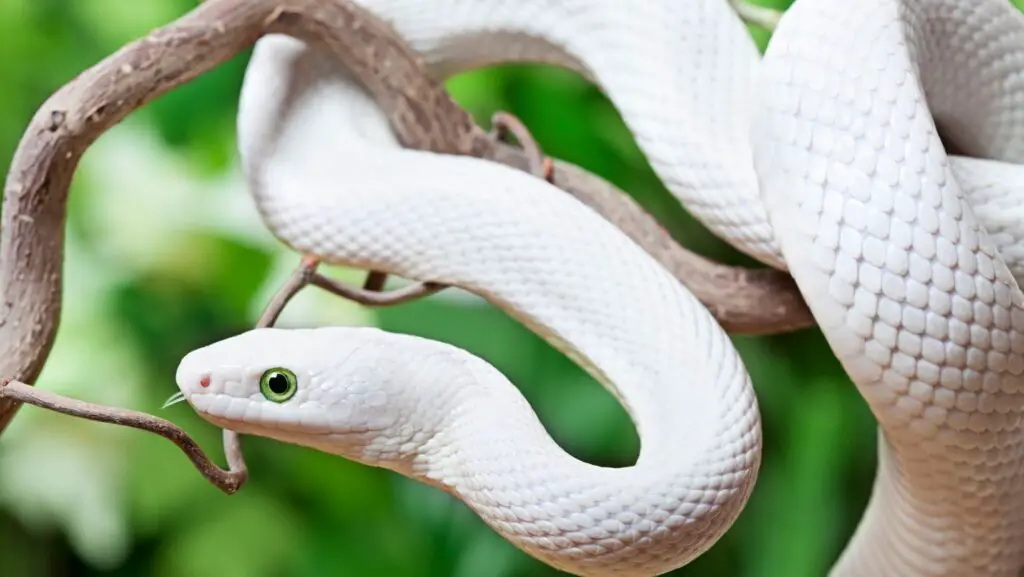
The Genetics of Leucistic Texas Rat Snakes
The leucistic trait in Texas Rat Snakes is inherited through a complex genetic mechanism. It is primarily caused by a recessive gene mutation that affects melanin production. To produce Leucistic Texas Rat Snakes, both parent snakes must carry this recessive gene. Breeding two snakes carrying the gene increases the likelihood of producing leucistic offspring. Understanding the genetic inheritance of Leucistic Texas Rat Snakes is crucial for breeders and enthusiasts interested in propagating this unique morph.
Habitat and Distribution
Leucistic Texas Rat Snakes inhabit a wide range of environments, including forests, grasslands, swamps, and agricultural areas. They are particularly prevalent in the southern regions of the United States, with Texas being a significant hub for their distribution. These snakes are excellent climbers and can be found in trees, shrubs, and abandoned buildings. They are highly adaptable and can survive in both rural and urban landscapes.
Behavior and Diet
Leucistic Texas Rat Snakes are predominantly nocturnal creatures, meaning they are most active during the night. They are skilled climbers and adept swimmers, allowing them to explore various habitats in search of food and shelter. These snakes are known for their calm and docile nature, often displaying a non-aggressive temperament. Their diet consists mainly of small mammals, birds, eggs, and occasionally other reptiles. Being constrictors, they overpower their prey by coiling around it until it succumbs to suffocation.
Breeding and Reproduction
Breeding Leucistic Texas Rat Snakes requires careful consideration and knowledge of their genetics. The breeding season usually occurs during the spring, when temperatures and environmental conditions are favorable. Male snakes engage in combat to compete for mating rights, displaying their dominance through wrestling and intertwining their bodies. Once mating occurs, the female snake will lay a clutch of eggs, usually ranging from 6 to 20 eggs, depending on her size and health. These eggs require an appropriate incubation period and temperature for successful hatching.
Health and Care Considerations
Caring for Leucistic Texas Rat Snakes requires providing a suitable enclosure that mimics their natural habitat. The enclosure should include hiding spots, climbing branches, and a temperature gradient to allow the snakes to regulate their body temperature effectively. They thrive in temperatures ranging from 75 to 85 degrees Fahrenheit (24 to 29 degrees Celsius). A well-balanced diet consisting of appropriately sized prey is essential for their overall health and nutrition. Regular health check-ups by a reptile veterinarian are recommended to ensure any potential health issues are addressed promptly.
Leucistic Texas Rat Snakes as Pets
Leucistic Texas Rat Snakes are popular choices as pets among reptile enthusiasts due to their unique appearance and docile nature. However, owning one requires a commitment to responsible pet ownership. Potential owners should have a good understanding of their care requirements, including habitat setup, temperature regulation, feeding habits, and handling techniques. Proper research and preparation are crucial before bringing a Leucistic Texas Rat Snake into one’s home.
Pros and Cons of Owning a Leucistic Texas Rat Snake
Owning a Leucistic Texas Rat Snake comes with its own set of advantages and considerations. On the positive side, these snakes are visually stunning and relatively easy to care for compared to other reptiles. They do not require elaborate setups or specialized diets. Their docile nature and non-venomous nature make them suitable for beginner snake owners. However, it’s important to note that Leucistic Texas Rat Snakes still require regular maintenance and attention, and their potential size should be considered before committing to ownership.
Common Misconceptions about Albino Snakes
There are several misconceptions surrounding albino snakes, including Leucistic Texas Rat Snakes. One common misconception is that albino snakes are blind due to their lack of pigmentation. In reality, albino snakes, including Leucistic Texas Rat Snakes, have normal eyesight, although their vision may be sensitive to bright light. It is essential to dispel these misconceptions to promote accurate understanding and appreciation of these unique creatures.
Conservation Efforts and Legalities
Leucistic Texas Rat Snakes, as a variation of the Texas Rat Snake species, are not currently listed as endangered or threatened. However, it is important to ensure the conservation of their natural habitats to protect their populations and biodiversity. Reptile enthusiasts and breeders should adhere to legal regulations regarding the ownership, breeding, and trade of Leucistic Texas Rat Snakes. Conservation efforts play a vital role in preserving the species and their genetic diversity.
Fascinating Facts about Leucistic Texas Rat Snakes
- Leucistic Texas Rat Snakes are excellent climbers, often observed scaling trees and fences.
- The lack of pigmentation in their skin makes them more susceptible to sunburn, requiring appropriate shade and UVB lighting.
- These snakes are adept at camouflage, blending into their surroundings to avoid detection.
- Leucistic Texas Rat Snakes play a vital role in controlling rodent populations, making them beneficial in agricultural areas.
- Their docile nature and striking appearance make them popular subjects for reptile photography.
Conclusion
Leucistic Texas Rat Snakes are captivating reptiles with their ethereal beauty and unique characteristics. Their stunning white or pale yellow scales, combined with their docile nature, make them highly sought-after among reptile enthusiasts. By understanding their genetics, habitat, behavior, and care requirements, we can appreciate and responsibly enjoy the presence of these albino snakes in our lives.
FAQs
1. Are Leucistic Texas Rat Snakes venomous? No, Leucistic Texas Rat Snakes are non-venomous. They rely on constriction to overpower their prey.
2. Can Leucistic Texas Rat Snakes live with other snake species? It is generally not recommended to house different snake species together, including Leucistic Texas Rat Snakes. Each species has its own specific care requirements, and housing them together can lead to stress, aggression, and potential harm.
3. How long do Leucistic Texas Rat Snakes live? Leucistic Texas Rat Snakes have an average lifespan of 15 to 20 years in captivity, although some individuals have been known to live even longer with proper care.
4. Do Leucistic Texas Rat Snakes require special lighting in their enclosure? Leucistic Texas Rat Snakes do not require specialized lighting but benefit from a regular day-night light cycle. Providing UVB lighting can be beneficial for their overall health and well-being.
5. Can I handle a Leucistic Texas Rat Snake? Leucistic Texas Rat Snakes can be handled, but it’s important to approach them with care and respect. Proper handling techniques should be followed to ensure the snake’s safety and minimize stress.

